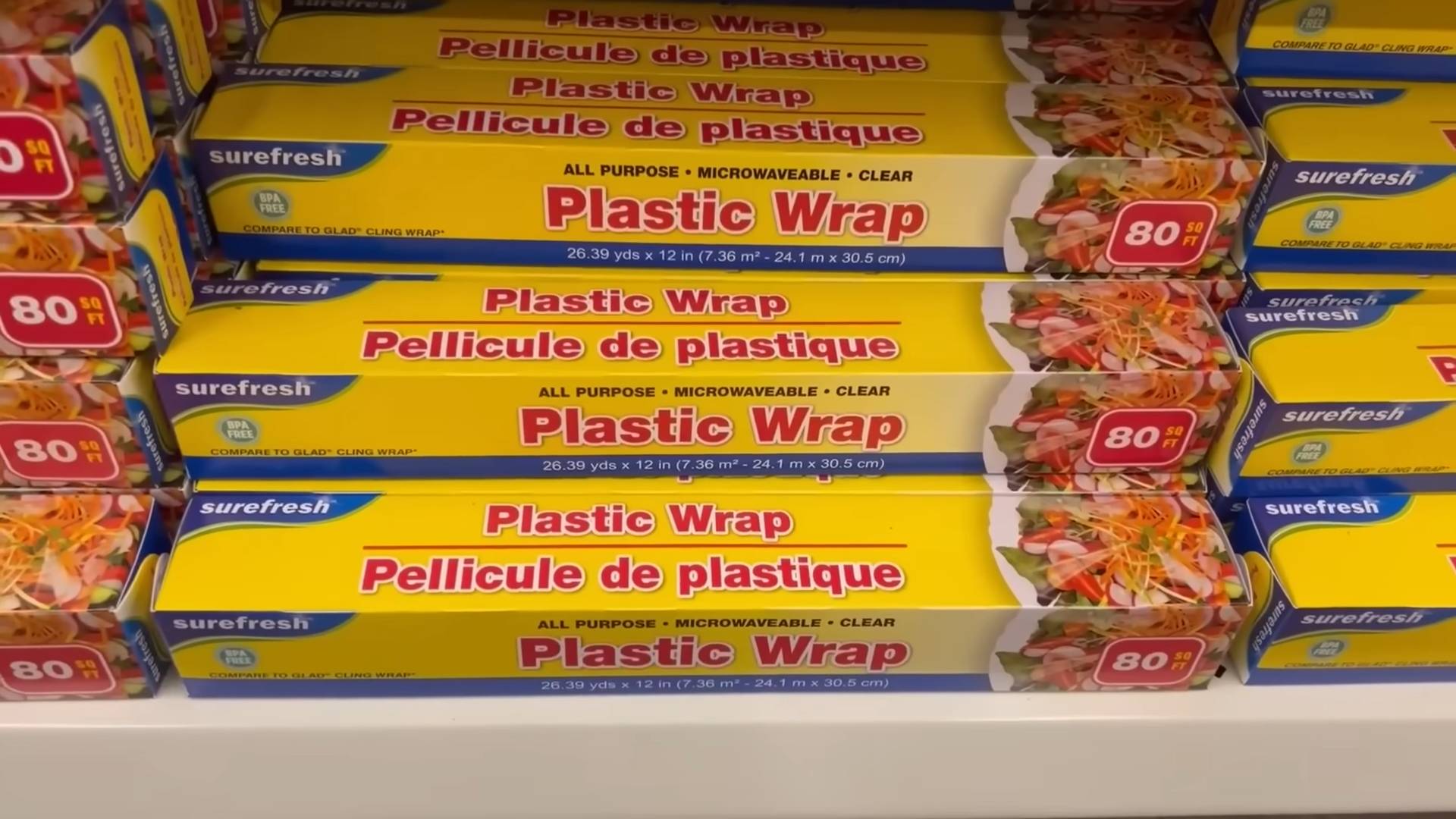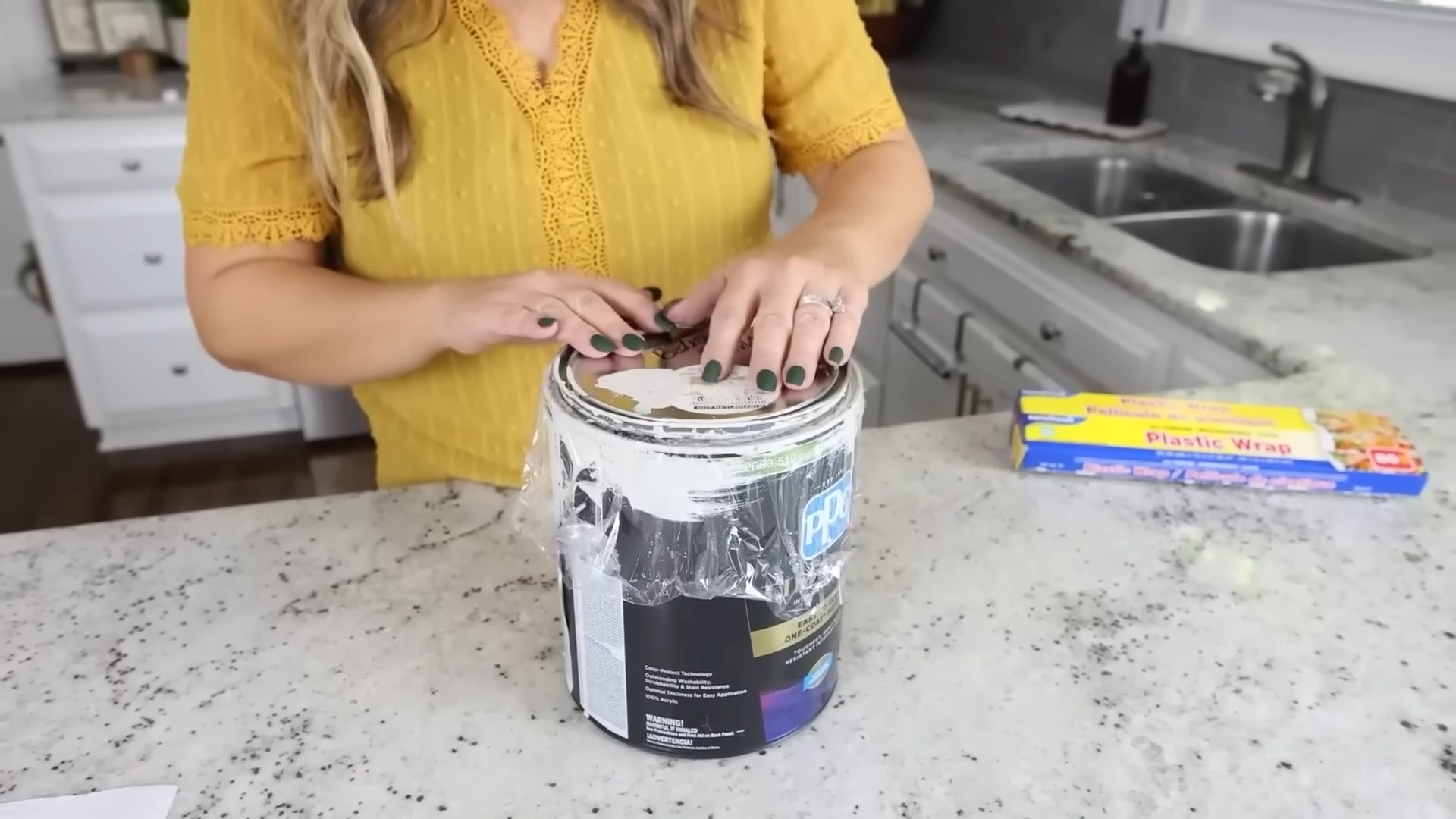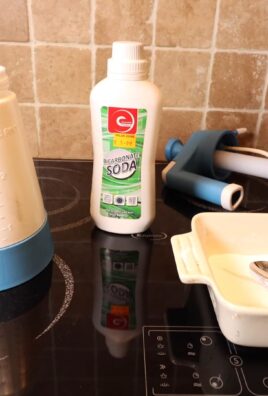DIY Plastic Wrap Tricks: Who knew that the humble roll of plastic wrap hiding in your kitchen drawer could be your secret weapon for a thriving garden? I certainly didn’t, until I stumbled upon some truly game-changing hacks! Forget expensive gardening gadgets and complicated techniques. We’re diving into the world of resourceful gardening, where everyday items become extraordinary tools.
For generations, gardeners have relied on ingenuity and resourcefulness to nurture their plants. From repurposing old tires as planters to using coffee grounds as fertilizer, the spirit of DIY has always been at the heart of successful gardening. These traditions remind us that innovation doesn’t always require fancy equipment; sometimes, the best solutions are right under our noses.
But why should you care about DIY plastic wrap tricks for your garden? Well, imagine protecting your delicate seedlings from harsh weather, creating mini-greenhouses for faster growth, or even deterring pesky pests without harmful chemicals. These simple, cost-effective solutions can make a huge difference in the health and productivity of your garden. I’m excited to share these clever techniques that will not only save you money but also empower you to become a more resourceful and successful gardener. Let’s unwrap the possibilities!

DIY Plastic Wrap Hacks: Unleash the Unexpected Power of Your Kitchen Staple!
Hey there, fellow DIY enthusiasts! I’m always on the lookout for clever ways to use everyday items in unexpected ways, and plastic wrap is a true unsung hero. Forget just covering leftovers; this stuff is a multi-tasking marvel! I’m going to share some of my favorite plastic wrap hacks that will simplify your life and maybe even save you some money. Let’s dive in!
Preventing Messes and Spills
Plastic wrap is your best friend when it comes to keeping things clean and contained. These hacks are lifesavers, trust me!
Preventing Leaks When Traveling
Ever had a shampoo bottle explode in your suitcase? Nightmare fuel! Here’s how to avoid that travel disaster:
1. Open the Bottle: Unscrew the cap of your shampoo, conditioner, lotion, or any other liquid-containing bottle.
2. Cover the Opening: Cut a square of plastic wrap that’s slightly larger than the bottle’s opening.
3. Secure the Wrap: Place the plastic wrap over the opening and screw the cap back on tightly. The plastic wrap creates an extra layer of protection, preventing leaks even if the cap loosens during travel.
4. Trim Excess (Optional): If you have excess plastic wrap hanging over the sides, you can carefully trim it with scissors for a neater look.
Protecting Your Fridge Shelves
Cleaning up spills in the fridge is one of my least favorite chores. This hack makes it a breeze:
1. Clear the Shelf: Remove everything from the fridge shelf you want to protect.
2. Measure and Cut: Measure the dimensions of the shelf and cut a piece of plastic wrap that’s slightly larger.
3. Apply the Wrap: Carefully lay the plastic wrap over the shelf, smoothing out any wrinkles or air bubbles. You can use your hand or a clean cloth to do this.
4. Secure the Edges (Optional): If you want to make sure the plastic wrap stays in place, you can use small pieces of tape to secure the edges to the underside of the shelf.
5. Replace Items: Put your food items back on the shelf. Now, if anything spills, you can simply remove the plastic wrap and replace it with a fresh piece!
Keeping Paintbrushes Fresh
If you’re taking a break from painting but don’t want your brushes to dry out, this is the perfect solution:
1. Remove Excess Paint: Clean your paintbrush as much as possible, removing excess paint.
2. Wrap the Brush Head: Tightly wrap the brush head with plastic wrap, making sure to cover all the bristles.
3. Seal the Handle (Optional): If you want to be extra cautious, you can also wrap the handle of the brush with plastic wrap.
4. Store the Brush: Lay the wrapped brush flat or hang it upside down. This will keep the bristles moist and prevent the paint from drying out.
Beauty and Skincare Hacks
Believe it or not, plastic wrap can also be a valuable tool in your beauty routine!
Boosting the Effectiveness of Face Masks
Want to get the most out of your face mask? Try this:
1. Apply Your Mask: Apply your favorite face mask as usual.
2. Cut Plastic Wrap: Cut a piece of plastic wrap large enough to cover your face, leaving holes for your eyes, nose, and mouth.
3. Apply the Wrap: Carefully place the plastic wrap over your face, pressing it gently to ensure it adheres to the mask.
4. Relax and Wait: Leave the plastic wrap on for the duration of the mask’s recommended time. The plastic wrap helps to trap heat and moisture, which can enhance the absorption of the mask’s ingredients.
5. Remove and Rinse: Remove the plastic wrap and rinse your face thoroughly.
Creating a DIY Body Wrap
This is a great way to temporarily tighten and tone your skin.
1. Exfoliate: Start by exfoliating the area you want to wrap (e.g., your stomach, thighs, or arms). This will help to remove dead skin cells and improve circulation.
2. Apply a Treatment: Apply a slimming cream, lotion, or oil to the area. You can use a store-bought product or make your own using ingredients like caffeine, seaweed, or essential oils.
3. Wrap with Plastic Wrap: Wrap the area tightly with plastic wrap, making sure to cover it completely.
4. Secure the Wrap: Use tape to secure the ends of the plastic wrap.
5. Wait and Relax: Leave the wrap on for 30-60 minutes. You can exercise or simply relax during this time.
6. Remove and Rinse: Remove the plastic wrap and rinse your skin thoroughly.
Helping with Cellulite
While plastic wrap won’t magically eliminate cellulite, it can help to improve its appearance temporarily.
1. Apply Anti-Cellulite Cream: Apply your favorite anti-cellulite cream or lotion to the affected area.
2. Wrap with Plastic Wrap: Wrap the area tightly with plastic wrap.
3. Wear Compression Garments (Optional): For added benefit, you can wear compression garments over the plastic wrap.
4. Leave Overnight: Leave the wrap on overnight.
5. Remove and Massage: Remove the plastic wrap in the morning and massage the area to improve circulation.
Household and Cleaning Hacks
Plastic wrap isn’t just for the kitchen; it can also be a handy cleaning tool!
Cleaning Chrome Fixtures
Get your chrome fixtures sparkling with this simple trick:
1. Apply Cleaner: Spray your chrome fixtures with your favorite chrome cleaner.
2. Wrap with Plastic Wrap: Wrap the fixtures with plastic wrap. This will help to keep the cleaner in contact with the surface and prevent it from drying out.
3. Wait: Let the cleaner sit for 15-20 minutes.
4. Remove and Wipe: Remove the plastic wrap and wipe the fixtures clean with a soft cloth.
Dusting Plants
Keep your plants looking their best with this easy dusting method:
1. Wrap the Pot: Wrap the pot of your plant with plastic wrap to prevent water from getting into the soil.
2. Rinse the Leaves: Gently rinse the leaves of your plant with water.
3. Remove the Wrap: Remove the plastic wrap from the pot.
4. Let Dry: Allow the leaves to air dry.
Protecting Surfaces During Painting
Avoid paint splatters with this simple protective measure:
1. Cover the Surface: Cover the surface you want to protect (e.g., furniture, floors, or countertops) with plastic wrap.
2. Secure the Wrap: Use tape to secure the edges of the plastic wrap.
3. Paint Away: Paint without worrying about making a mess!
4. Remove and Discard: Once you’re finished painting, simply remove the plastic wrap and discard it.
Food-Related Hacks (Beyond Leftovers!)
Of course, plastic wrap is a kitchen essential, but here are some less common uses:
Preventing Avocado Browning
Keep your avocado green and fresh with this simple trick:
1. Cut the Avocado: Cut the avocado in half and remove the pit.
2. Wrap Tightly: Tightly wrap the cut side of the avocado with plastic wrap, making sure to press out any air bubbles.
3. Refrigerate: Store the wrapped avocado in the refrigerator. The plastic wrap will help to prevent oxidation and keep the avocado from browning.
Keeping Bananas Fresh Longer
Extend the life of your bananas with this easy tip:
1. Separate the Bananas: Separate the bananas from the bunch.
2. Wrap the Stems: Wrap the stems of each banana with plastic wrap.
3. Store: Store the wrapped bananas at room temperature. The plastic wrap will help to slow down the ripening process.
Poaching Eggs Perfectly
Achieve perfectly poached eggs every time with this method:
1. Prepare the Wrap: Cut a square of plastic wrap and lightly grease it with oil or cooking spray.
2. Line a Cup: Press the plastic wrap into a small cup or ramekin, creating a pouch.
3. Crack the Egg: Crack an egg into the plastic wrap pouch.
4. Season: Season the egg with salt and pepper.
5. Tie the Pouch: Gather the edges of the plastic wrap and tie them together to create a sealed pouch.
6. Poach: Gently lower the pouch into a pot of simmering water.
7. Cook: Cook for 3-5 minutes, depending on how runny you like your yolk.
8. Remove and Serve:

Conclusion
So, there you have it! These DIY plastic wrap tricks are more than just clever hacks; they’re game-changers in the kitchen and beyond. From keeping your avocados fresh for days to creating perfectly poached eggs, the versatility of this everyday item is truly astounding. We’ve shown you how to prevent browning, create airtight seals, and even ease the pain of sore muscles – all with a simple roll of plastic wrap.
Why is this a must-try? Because it saves you money, reduces food waste, and simplifies everyday tasks. Think about it: no more throwing away half-eaten avocados, no more struggling to keep your salad crisp, and no more expensive specialty tools cluttering your drawers. These plastic wrap hacks are practical, efficient, and incredibly easy to implement.
But don’t stop there! Feel free to experiment with variations. For example, try using plastic wrap to create a makeshift piping bag for decorating cookies or cakes. Or, use it to protect delicate herbs from bruising during transport. You can even use it to create a temporary barrier when painting, preventing drips and splatters. The possibilities are truly endless.
We’ve focused on simple, effective techniques, but the real magic happens when you start to adapt them to your own needs and preferences. Maybe you’ll discover a new way to use plastic wrap to organize your jewelry, or perhaps you’ll find it’s the perfect solution for keeping your travel-sized toiletries from leaking.
The key takeaway here is that DIY plastic wrap tricks are not just about convenience; they’re about resourcefulness and creativity. They’re about finding simple solutions to everyday problems and making the most of what you already have.
So, what are you waiting for? Grab a roll of plastic wrap and start experimenting! We’re confident that you’ll be amazed by the results. And more importantly, we want to hear about your experiences. Share your own plastic wrap hacks and tips in the comments below. Let us know which tricks worked best for you, and if you discovered any new and innovative uses for this versatile kitchen staple. Your feedback will not only help other readers but also inspire us to continue exploring the endless possibilities of DIY solutions. Let’s build a community of resourceful individuals who are passionate about making life easier and more sustainable, one plastic wrap trick at a time. We can’t wait to see what you come up with!
Frequently Asked Questions (FAQs)
Q: Is all plastic wrap food-safe?
A: Not all plastic wrap is created equal. It’s crucial to check the packaging to ensure that the plastic wrap you’re using is specifically labeled as food-safe. This means it’s been tested and approved for contact with food and won’t leach harmful chemicals into your meals. Avoid using industrial-grade plastic wrap for food storage, as it may contain substances that are not safe for consumption. Look for brands that explicitly state their product is BPA-free and phthalate-free for added peace of mind. When in doubt, err on the side of caution and choose a reputable brand known for its food-safe products.
Q: Can I reuse plastic wrap?
A: While it might be tempting to reuse plastic wrap to save money and reduce waste, it’s generally not recommended, especially after it has come into contact with food. Plastic wrap is designed for single-use applications, and washing it can compromise its integrity, making it less effective at creating an airtight seal. Additionally, reusing plastic wrap can increase the risk of bacterial contamination, as it’s difficult to thoroughly clean and sanitize. For more sustainable food storage options, consider investing in reusable containers, silicone wraps, or beeswax wraps. These alternatives are not only better for the environment but also offer a more hygienic and effective way to keep your food fresh.
Q: What are some alternatives to plastic wrap?
A: If you’re looking to reduce your reliance on plastic wrap, there are several excellent alternatives available. Reusable silicone wraps are a popular choice, as they can be stretched and molded to fit various containers and food items. Beeswax wraps are another eco-friendly option, made from cotton fabric coated in beeswax, tree resin, and jojoba oil. These wraps are naturally antibacterial and can be used to wrap fruits, vegetables, cheese, and bread. Reusable containers with airtight lids are also a great way to store leftovers and meal prep ingredients. For covering bowls and dishes, consider using silicone lids or simply placing a plate on top. By exploring these alternatives, you can significantly reduce your plastic consumption and create a more sustainable kitchen.
Q: How do I prevent plastic wrap from sticking to itself?
A: Ah, the age-old struggle with plastic wrap! To prevent it from clinging to itself and creating a tangled mess, try these tips: First, store your plastic wrap in the refrigerator. The cold temperature will make it less sticky and easier to handle. When dispensing the wrap, pull it out slowly and evenly, avoiding any sudden jerks. If you’re having trouble separating the layers, try gently rubbing the edges together to create a static charge that will help them separate. Another trick is to lightly dust the plastic wrap with cornstarch or flour before using it. This will create a barrier between the layers and prevent them from sticking together. With a little practice and these helpful tips, you’ll be able to master the art of using plastic wrap without the frustration.
Q: Can I use plastic wrap in the microwave?
A: Whether or not you can use plastic wrap in the microwave depends on the type of plastic wrap and the specific instructions provided by the manufacturer. Some plastic wraps are specifically designed to be microwave-safe, while others are not. Always check the packaging to see if the plastic wrap is labeled as microwave-safe before using it in the microwave. If it is microwave-safe, make sure to leave a small vent to allow steam to escape and prevent the plastic wrap from melting or bursting. However, it’s generally recommended to avoid using plastic wrap in the microwave whenever possible, as there is a risk of chemicals leaching into your food. Instead, opt for microwave-safe glass or ceramic containers with lids. These alternatives are safer and more durable, and they won’t pose a risk to your health.
Q: How can I use plastic wrap to prevent browning of fruits and vegetables?
A: Plastic wrap is an excellent tool for preventing the browning of cut fruits and vegetables, such as avocados, apples, and potatoes. The key is to create an airtight seal that prevents oxygen from reaching the surface of the food. For avocados, press the plastic wrap directly onto the cut surface, ensuring that there are no air pockets. For apples and potatoes, you can wrap them tightly in plastic wrap or submerge them in water with a layer of plastic wrap pressed on top. The water acts as a barrier to oxygen, while the plastic wrap helps to keep the food submerged. By using these simple techniques, you can significantly extend the shelf life of your fruits and vegetables and reduce food waste. Remember to store the wrapped produce in the refrigerator for optimal freshness.




Leave a Comment